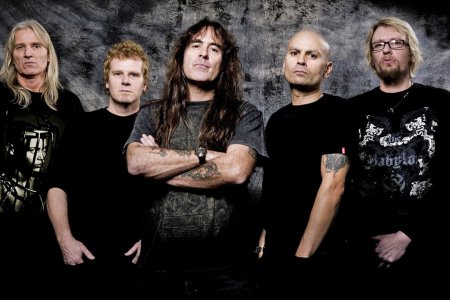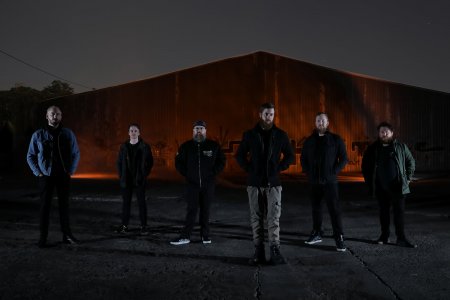There is no need for extensive introduction, in the case of legendary American bassist Tony Levin. Therefore take this interview as a taste of his current activities, various memories and gear collection. Chapman Stick truly sticks out, but the spectrum is quite broad. Same goes for his upcoming touring plans, which include Stick Men tour these days, including shows in Prague and Brno. Later on the offer is also quite attractive, as legendary prog band King Crimson embark on European tour and they promise also unique playlist for each show. In or interview we also mentioned Tony’s interest in photography, blogging and memories on his main “employers” including Peter Gabriel and Croatian icon Gibonni.
Big thanks goes to Tony for an exclusive photo shoot.
Photos credit: Juergen Spachmann & Tony Levin
This interview in Czech for magazine Muzikus here.
Your Czech fans will have a chance to see multiple times this year. But before we get to that, I remember seeing you live with The Crimson ProjeKCt few years ago. It was a great show combining two power trios. What are your memories on that tour and a live cooperation?
The Crimson ProjeKCt was fun! Of course, anything with Adrian Belew is going to be both fun and musically special. We toured quite a bit with that lineup, playing Crimson music, but also Adrian Belew Trio music, and Stick Men pieces, so it was a good variety. But once King Crimson became active again, I felt it was too confusing for fans to have both groups actively touring, so I asked to suspend the ProjeKCt until Crimson’s no longer touring.
During March you will be coming to Czech Republic both to Brno and Prague with Stick Men. Over time I have always loved the chemistry in the band. How did you manage to maintain it over years and continuously progress?
We really enjoy playing our music in Stick Men and free to go in whatever direction we please, and I feel we’ve got a pretty unique style to the band, with two touch style guitars varying who has the bass and melody, and with Pat’s unique electronic (and acoustic) drumming providing the perfect accompaniment. There are plenty of Crimson pieces (of course, since two of us are in the group) and those vary from tour to tour, so I actually don’t know what pieces will be on the set this Spring.
It can be truly felt on your latest album Prog Noir. Could you please give us an idea how did the songwriting on this piece looked like? I feel absolute creative freedom, to go into experimental or even dark atmospheres.
Yes, dark for sure! We’re not afraid to go that way! This is the album where we gave ourselves time to settle into the style and content for a special release. Usually we’re somewhat pressured to have a release for each tour, which leads to improv and live albums – those are very good, but sometimes you need to write the material and then spend another year or so fine tuning it, and rejecting some songs if they don’t fit. That’s what we did with Prog Noir. It could have released it a full year earlier, but the lyrics wouldn’t have been as good, and the feeling, even the ‘noir’ theme, wouldn’t have been what it is.

We are free to go in whatever direction we please with Stick Men, and I feel we’ve got a pretty unique style to the band
Top class taste
I have a cool question from a colleague of mine: “What is groove by your opinion?”
I don’t think I can define it too well, but I think drummers can be very good by playing in time and covering the music well. The extra part comes when they become good enough to add a feel to that part – in a way it’s not easy, and in a way it’s very easy if the drummer has that feel internally. Likewise for bassists, but hard to do it without a drummer who is clued in to it. And when the whole rhythm section has a groove of its own, some very special music come out, which goes beyond just playing the right notes.
You list of cooperations is absolutely breathtaking. Next to John Lennon, Pink Floyd, Cher, Dire Straits there are also legendary albums as Alice Cooper’s Welcome to My Nightmare and Lou Reed’s Berlin. Could you please mention some which stand out in positive or negative way?
I don’t keep a log of whom I’ve played with, so not much in the way of stories. Like most players, I’m quite focused on what I’m doing now, not what I did before (or even what I’m going to be doing in the future!) I’ve been very lucky, that’s for sure, not only to play with those artists, but to play with great drummers and guitarists, who taught me by their ability to improve my own playing and musicality. So, for me, it’s been a learning experience playing on a lot of recordings with a lot of players.
Naturally you have experienced a lot, therefore it would be a shame, not to share. What have you learned about blogging and sharing thoughts? Do you believe more in the power of pictures, than long texts? You tour diaries are almost as family albums and interesting photos collection of things that grab your attention.
I started my website pretty early, and learned quickly that what visitors wanted was not for me to try to sell them whatever music I was working on, but to share the experience behind the stage. And it’s been very gratifying to do that – both with diaries and photos. There is, necessarily, something of a wall between performers and their audience, at least with a bigger group like Crimson or Gabriel – and the web afforded us a chance to tear down some of that distance, to let us onstage share how things went in preparation, and most important, to show in photos of the audience, how important their energy is to us, and how it helps inspire us each night. For sure my favorited photos are those of audiences.

When the whole rhythm section has a groove of its own, some very special music come out, which goes beyond just playing the right notes.
One of the recent collaborations was on very successful David Bowie’s The Next Day. I was never much a Bowie fan, but this album truly got me. How was it with you?
Very special album, very emotional and deep in a way that resonated with me. I was, of course, honored to be asked to play on some tracks, and it was a bizarre experience to have to keep it a secret for over a year… but very happy when it came out, and I think it’s a great album.
Gibonni
Another big connection my family has with your name next to Peter Gabriel is Gibonni. In an interview I conducted with him, he mentioned, it was not complicated to convince you to join him, as you enjoyed his music and you learned the parts incredibly fast. How was an experience to join him artistically and also live for an enthusiastic Balkan crowd?
Great singer, great crowds. Yes, I came in at the last minute for a tour (because of a change in bass players) and was very impressed with Gibonni. Had a great time in Croatia, too – two tours, actually, and those were my first times there. Another example of how music can bring people together.
How did you prepare for the show?
It was some time ago. As I remember, they just sent me the songs and I learned them… nothing tricky about that.
Gibonni’s memories of Tony Levin
Interview with Croatian singer Gibonni conducted together with Vladislav Sywala
During Mirakul tour you had on stage top class instrumentalists including Manu Katché and Tony Levin. I guess, it’s not needed to emphasize extensively, such personalities would not be playing with just anybody. How did you manage to establish a cooperation with legend as Tony Levin?
Gibonni: The whole cooperation started thanks to Sting, who was performing in Croatia number of times. I managed to get a contact on his manager through my friend, who is a journalist. This way, I managed to arrange a meeting with Manu Katché. You can grab attention of this sort of musicians only with quality music. I was really happy he agreed, after I played him a second song. As we were looking for a bassist as well, Manu called Pino Palladino, which eventually couldn’t do it, because of an urgent request from The Who. Manu then offered to try Tony, but I thought the chance was too small. Fortunately Tony agreed and learned the songs in two days. After few practices we did a short tour, which was captured on DVD Mirakul. He was even a guest on one of my albums. It was a huge honour, to cooperate with such music personalities.
Gear
What the first bass you picked up and could you please describe us a journey towards Chapman Stick?
I played the acoustic bass from when I was young (maybe a Czech one… not sure right now). Classical music was crucial for me until my teens. Then, while playing in an orchestra, I got the Ampeg Baby Bass, an electric upright, and played jazz on that. Then a Fender Precision (not even realizing how special it was… they were cheap in those days!) Moved to Music Man’s StingRay when it came out, to have more low end in my sound. When I heard about the Chapman Stick, in ’76, I was already playing the bass some with ‘hammer on’ technique… so it seemed it’d be a good instrument for me. I played it a little on Peter’s first tour, in ’76, but only gradually got the hang of it. And I played only the bass side of it for the first few years! When Crimson’s Discipline album was made, I’d started to also play the guitar side of the Stick. I’m much more a learner than a teacher. And I’m not as adventurous about trying basses as I used to be. I like the ones I play, and have, probably, too many basses already. I know great instruments are being created, but as I said, I’m pretty happy with what I have.
Did you manage any progress in playing stick lately?
I’m always practicing it, and always trying to learn to play it better. (And always hearing other players do amazing stuff that I’d never have thought of!)
How would you compare the Stick to other bass guitar you have in your collection?
Well, it’s a really different sound, and I use it in a different way. I let the music determine which instrument I reach for – sometimes the Stick feels like the right choice… sometimes it’s the bass.
Tell us a bit about amps you prefer at home and on the tour please.
I’ve liked Ampeg amps for a long long time. Have and SVT Pro 2 at home, and use it on whatever recordings amp is needed on. In live shows, I’ll use an SVT if it’s feasible – but with the smaller groups, Levin Brothers and Stick Men, we don’t have the facility to carry much gear, so I just go direct to the board.
Any recent discoveries within effects?
Always trying new things, and sometimes I’m very happy with something new I find. There are so many choices now, and to be honest, my sound is a journey for me… I don’t want it to necessarily stay the way it’s been, especially with Crimson, so pedals have become pretty important. I’d guess that in my touring rig of Crimson, I have about 5 distortion effects I use at different times.
In one of the earlier interviews you said, that you often record at home. Someone sends you a basic track and you record the bass line. Why do you prefer this approach and not to have always immediate response?
I do record a lot from my home studio (did two tracks just today.) It’s fun, and much more cost-effective than somebody flying me somewhere, hiring a studio and hotels and all… budgets just aren’t that big usually, so it’s great to still be able to participate in good records.

There is a wall between performers and their audience and the web afforded us a chance to tear down some of that distance
Peter Gabriel
You have been playing with Peter Gabriel for many years. How did you manage to develop such a strong connection?
Well, we just enjoy making music together.
I’m in the close contact with Peter Gabriel’s music since diapers, but older I got, I respected his aim for development and innovation. As you have a same desire, what did you learn from him?
I’ve learned a lot, both about performance (he’s such a super performer in many ways) and personally, because he’s also a very real, humble and special person.
King Crimson
Czech fans will have a chance to see you in the summer with King Crimson. What motivated you guys to get together and organize this tour?
It’s a wild lineup this time, with King Crimson – 8 players, 3 drummers… and we do a lot of the classic Crimson repertoire that Robert Fripp had avoided for the many years I’ve been in the band. What’s in common with all Crimson lineups is that we challenge ourselves a lot to be excellent, and to not do what we did before musically – this is a band that’s truly ‘progressive’, so new ideas are welcome. The fans have felt our shows are very special and I have to say I agree. Can’t wait to bring it to Czech Republic.
Do you manage to enjoy your love for photography during a tour?
Love taking photos, and especially sharing them with fans. On the Crimson tour we have strict rules against audience taking photos until the very end, so, to be fair, I also refrain from taking them until after the encore… it’s hard for me to miss up on what would be some fun pictures of the band in action, but that’s the way it is on the current Crimson shows.






